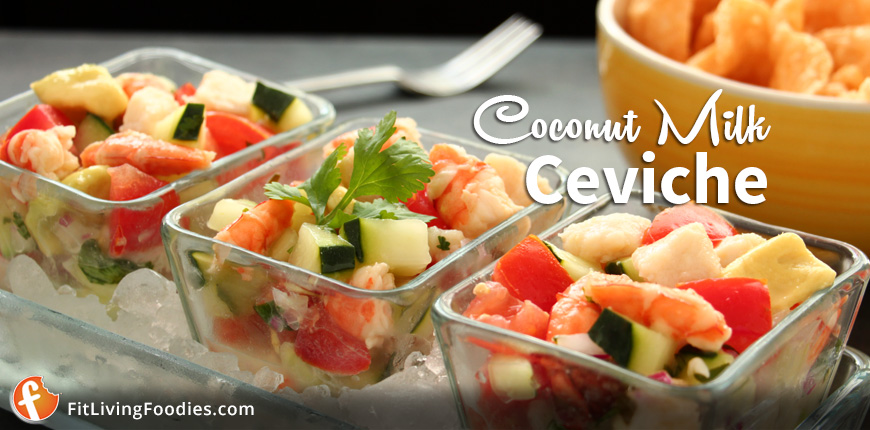
One of my favorite things about summertime is BBQs and sunshine. Yet I never thought I’d be getting too much sun and shying away from the BBQ. But what else can you do when it’s 100+ degree outside? This is why we’re sharing a cooler, more refreshing recipe that’s easy to make and sure to freshen up any hot day! Lime juice is the key to the “cooking” of the fish and that’s where the recipe started. In case you didn’t know, this chemical process is known as “denaturation”. It’s the citric acid that changes the proteins in the fish, unraveling the molecules and changing their chemical and physical properties. That’s why the fish turns opaque once it’s been bathed in the lime juice. This is one of the reasons we opted for tilapia and large prawns for our version since both were affordable and respond well to the citric acid bath. And since tilapia is a very lean fish, it’s also lower in mercury. But feel free to swap out any white flaky fish for the tilapia if your heart desires. You can also substitute shrimp for prawns, although they tend to have more carbs than prawns do.

After gobbling up the first batch with the lime juice base I realized it was missing something. Fat! And since most fats are solid at cold temperatures and this recipes needs to remain refrigerated, I knew there was only one suitable choice – coconut milk. Full-fat coconut milk is probably one of my favorite fats. In part because it tastes amazing, but more importantly it’s jam-packed with high quality MCT’s (medium-chain triglycerides) and we all know that eating fat helps us burn fat. Score! It complimented the freshness of the ceviche perfectly with it’s added flavor punch and helped make it a more satiating meal overall. Traditionally, ceviche is served with tortilla chips so keep it ultra low-carb by serving it with pork rinds!
Instructions
Recipe NotesNutritional Data for Coconut Milk Ceviche
Click here for "Understanding the Macronutrient Guide"
Nutritional Data for Coconut Milk Ceviche served with Pork Rinds
Click here for "Understanding the Macronutrient Guide" |






